At the first "real" elevators - Siemens and Galske, Otis - went to look like a miracle. This was a miracle - one of the key inventions that made building growth possible. An elevator ride is a paradox to some extent: an elevator gives you the opportunity to get to the 10th, 15th or 87th floor, but if there was no elevator, we wouldn’t have to go to the 10th, 15th or 87th floor due to the lack of these floors. From this point of view, elevators have changed our life, probably more than the Internet, space rockets, cryptocurrency exchanges and shale oil production. However, we will not oppose all of the above to the passenger-lifting worker - after all, even today he is not the same as before. Another technological revolution is irreversibly changing this look. See how?
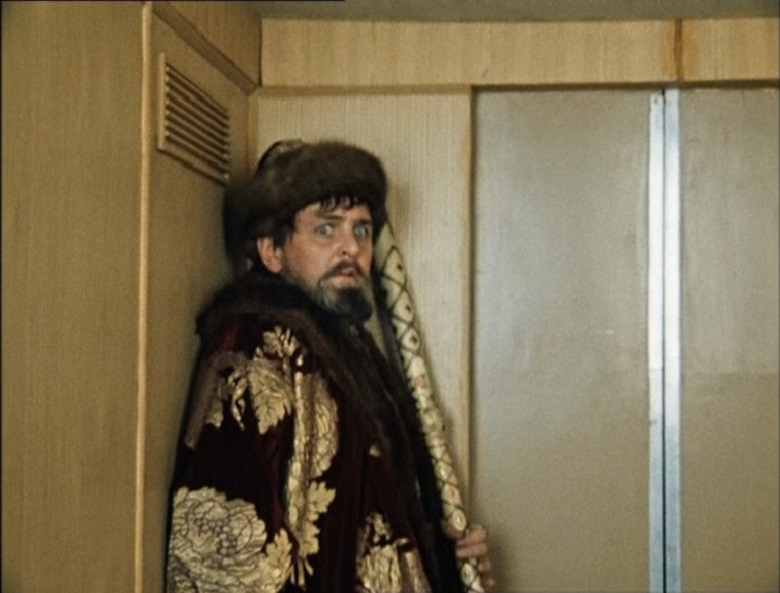 Screenshot from the film “Ivan Vasilyevich Changes Profession”
Screenshot from the film “Ivan Vasilyevich Changes Profession”A gift from the ancient Romans
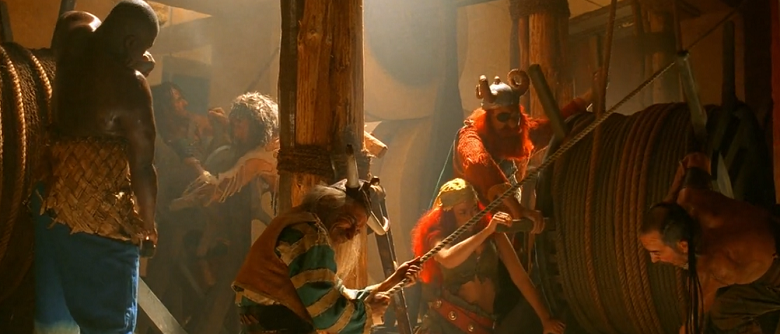 Screenshot from the movie “Asterix and Obelix: Cleopatra's mission”. Unlucky Vikings operate an elevator, on which Caesar and Cleopatra rise. Kinoshutka, but not quite
Screenshot from the movie “Asterix and Obelix: Cleopatra's mission”. Unlucky Vikings operate an elevator, on which Caesar and Cleopatra rise. Kinoshutka, but not quiteLift engineering is an unusually conservative industry. If you think about it, there are practically no fundamental differences between the modern elevator and the structures used, for example, in the Roman Coliseum in order to climb the arena for gladiatorial fights.
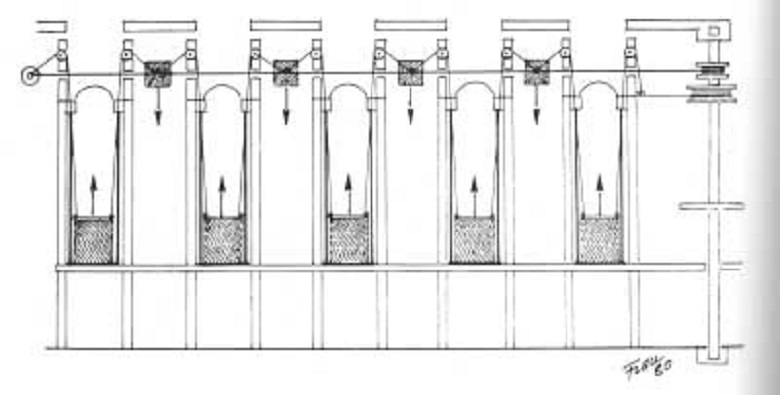 Scheme of lifts in the Colosseum
Scheme of lifts in the ColosseumYes, the force of the muscles of the slaves, who lowered the counterweight or turned the winch, was replaced first by steam engines, and then by electric motors. But these innovations are already one hundred and fifty years old. The first electric passenger elevator Siemens & Halske built in 1880, OTIS - in 1889.
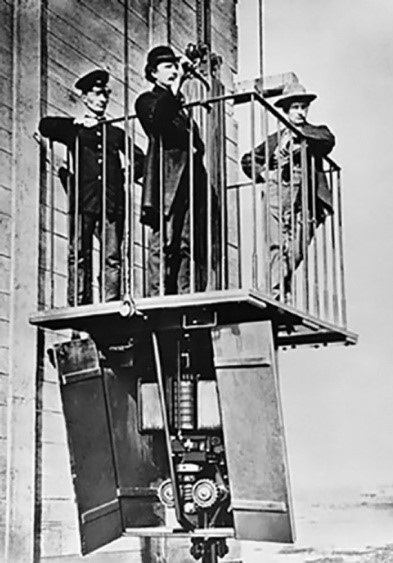 Demonstration of the first electric elevator
Demonstration of the first electric elevator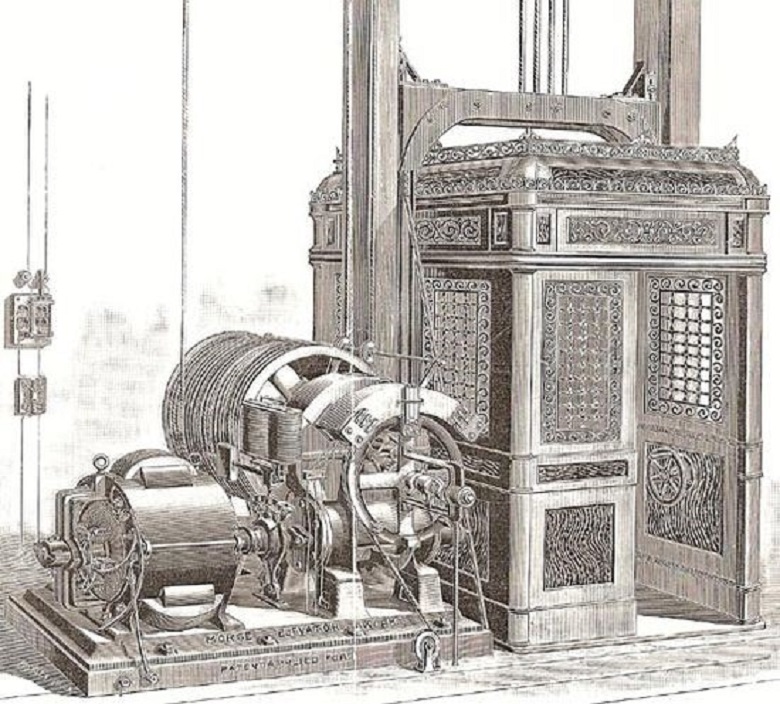 Electric lift company Otis Elevator
Electric lift company Otis ElevatorEven the automatic safety device, which stops the elevator when the cable breaks, which all lift systems are equipped with today, in the middle of the 19th century, Elisha Graves Otis patented the same, and the limiter, which includes catchers when the rated speed was exceeded, was invented in 1878.
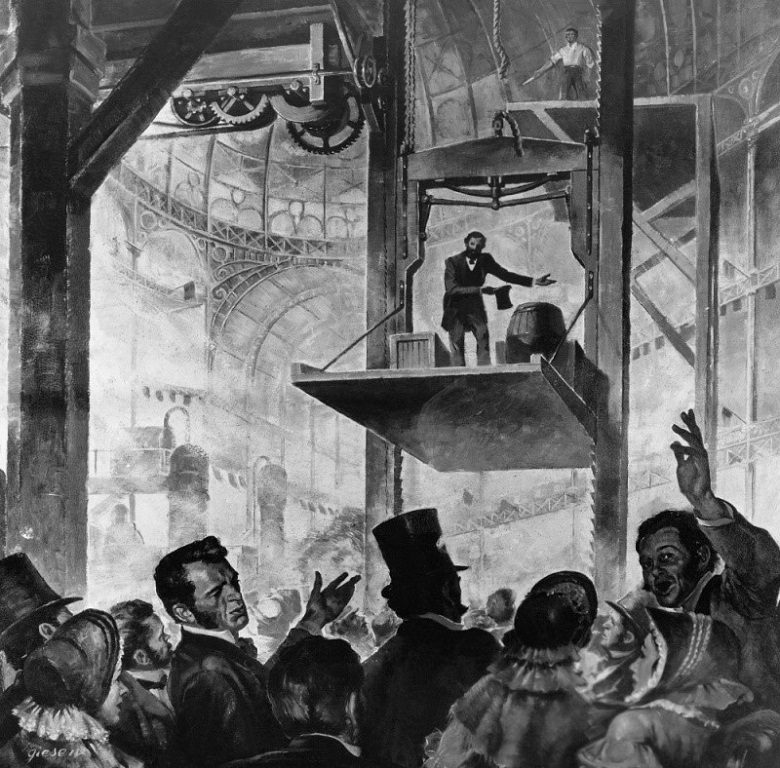 1854 Elisha Otis advertises at one of the New York exhibitions his system of emergency lift stop
1854 Elisha Otis advertises at one of the New York exhibitions his system of emergency lift stop
Even the leaders of the vertical transport market today are almost the same as a century ago: Otis, Schindler, Kone, and newcomer ThyssenKrupp who joined the veterans in 1954.
So what to talk about, if everything is already invented before us and well known to most?
But do not rush.
The car goes to start
Lift construction shows: deep modernization of classic solutions can give fantastic results. First of all, it’s about speed decisions. It is ironic that we live in an era of the highest speeds and at the same time the most acute shortage of time. People cannot afford to spend a few extra minutes on the elevator ride. The task of any transport system today is to have time to transport as many people as possible in the shortest possible period of time.
The first Siemens and Galske electric elevator rose to a height of 22 meters in 11 seconds. Today's champions overcome during this time many times more distance. The race between elevator builders, mostly Japanese, already serious, continues to gain momentum.
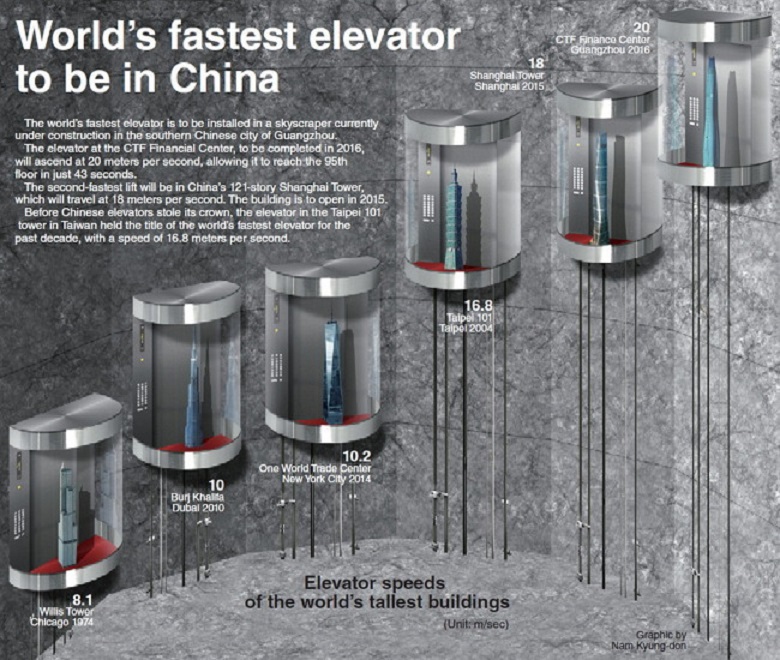 The growth rate of elevator speeds on the segment from 1974 to 2016. A source
The growth rate of elevator speeds on the segment from 1974 to 2016. A source
Do not think about seconds down
If we assume that we managed to build an elevator with the desired lift height while maintaining speed characteristics, then a ride on the Siemens and Galske elevator to the Lakhta Center observation platform would take 3 minutes - instead of 45 seconds on the shuttle, which will deliver in reality. In principle, even 3 minutes is not for long ... But let's see what minute saving gives.
On the ascent and descent we get 4.5 minutes of time saved. With a 12-hour viewing platform and a half-hour visit time on descents and ascents, it saves about 1.5 hours - time for three more groups of people who want to see the high-altitude panorama of the city. The data on the mode of operation of the object, of course, taken abstract - just for example.

Panorama from the observation platform Lakhta Center. Gigapixel version - on the project website
But back to the race of high lift speeds.
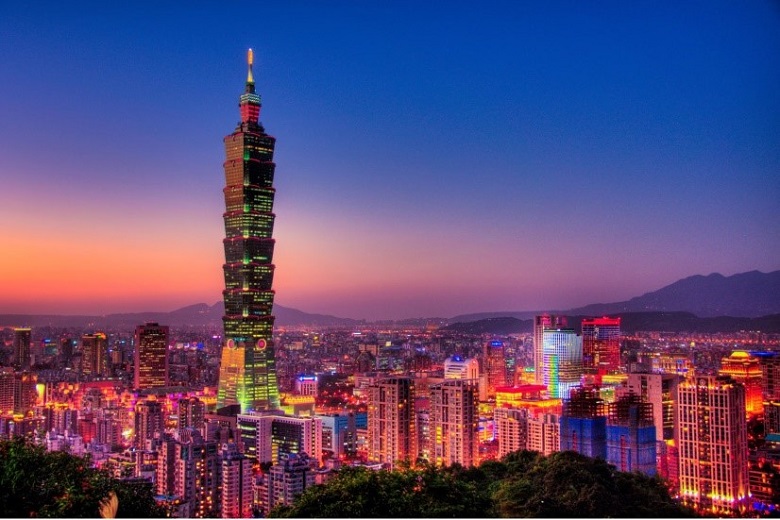
In 2004, the status of the world's fastest elevators was captured by two Toshiba high-speed elevators installed in the Taipei 101 skyscraper in Taipei (Taiwan), reaching a speed of 60.6 km / h. Almost twice as fast as one of the fastest footballers on the planet, Cristiano Ronaldo (33.6 km / h)
 Ronaldo and Bugatti Veyron - a provocation from advertisers, but the speed race is good
Ronaldo and Bugatti Veyron - a provocation from advertisers, but the speed race is goodElevators from Taipei stayed on top for more than 10 years and were dropped from their pedestals in 2015 by competitors from Mitsibishi, who installed an elevator in the Shanghai Tower, with a maximum speed of 73.8 km / h.
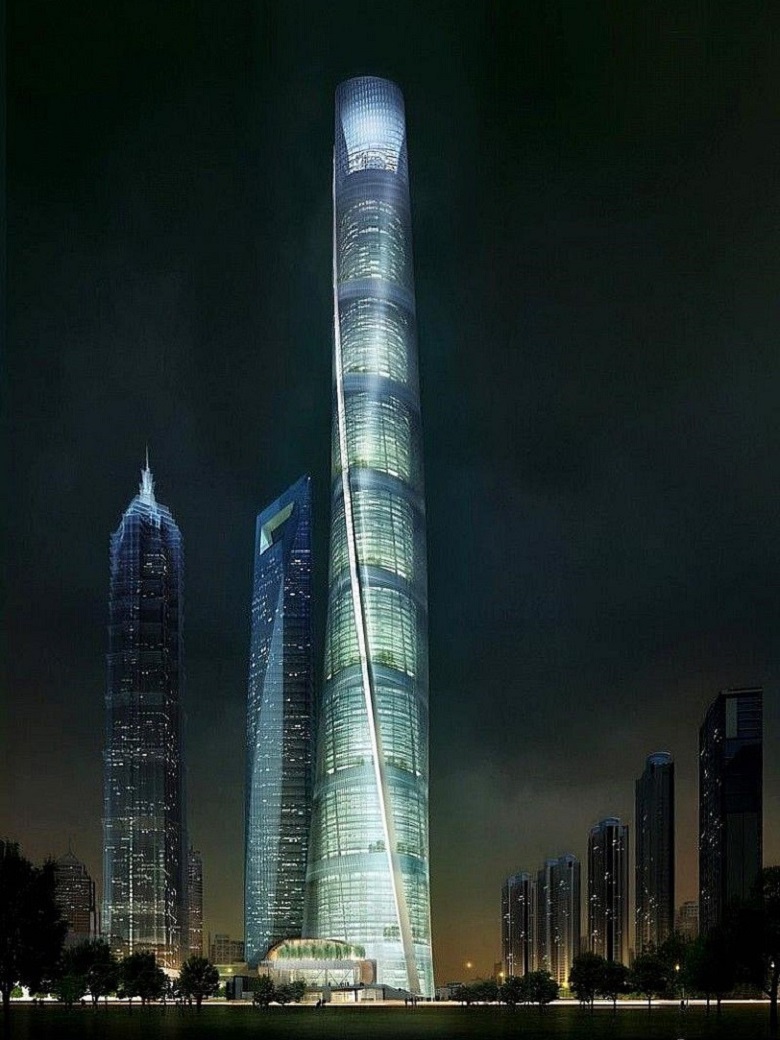
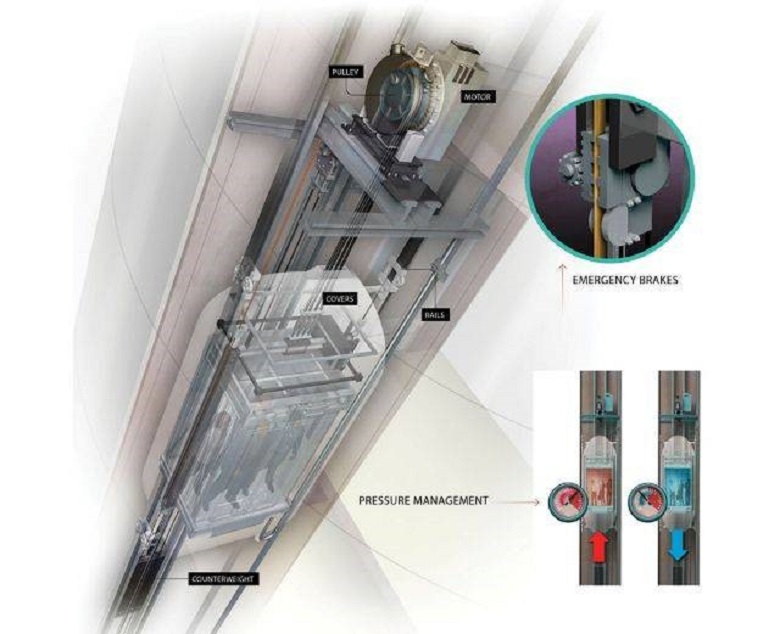
The life of this record did not exceed a year. Already in 2016, Hitachi launched an elevator at the Guangzhou Financial Center (CTF Finance Center), which, at testing in June 2017, reached a speed of 75.6 km / h. However, it is not supposed to drive it in real operation - it will lift passengers at a speed of 72 km / h, and lower it - with half as much.
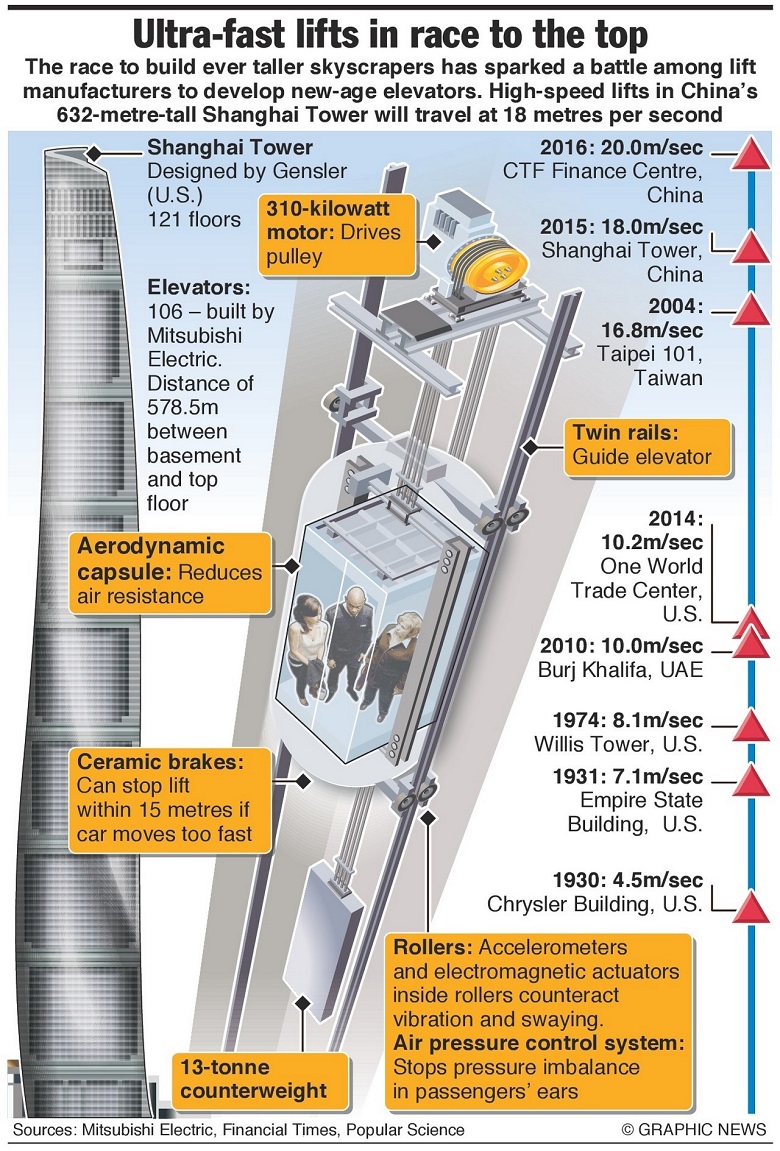
Ride quality matters
With the growth of lift speeds, two problems affecting passenger comfort also grow.
Vibration
The first problem is horizontal vibration during lifting. And there is still a big question, what kind of discomfort will the passenger experience - physical or psychological, when traveling in an actively shaking cabin, which is gaining a height of hundreds of meters at a speed of 60-70 km per hour ...
For now, the main way to control vibration is technology like the Active Roller Guide System, by means of which they quench vibrations to about half the values. Technologists use rollers with the help of which the elevator moves along guide rails. The system includes horizontal vibration sensors, from which the opposing electromagnetic force is transmitted through the control device to the roller drives.
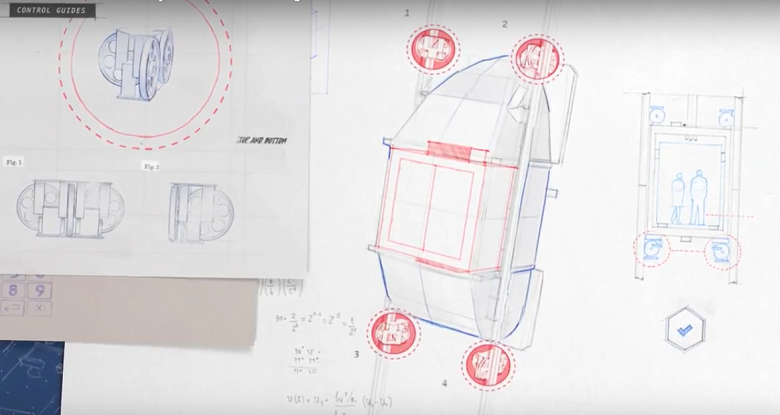 Horizontal suspension lift with an active roller guide system. The roller wheel, with the help of which the elevator goes along the guide, is connected to the control element, the one to the drive, which receives a signal from the accelerometer type motion sensor. Screenshot from video
Horizontal suspension lift with an active roller guide system. The roller wheel, with the help of which the elevator goes along the guide, is connected to the control element, the one to the drive, which receives a signal from the accelerometer type motion sensor. Screenshot from videoSave our ears
The second problem of high-speed elevators is noise when driving and pressure drops causing the effect of blocked ears. Regarding noise - according to Hitachi calculations, the speed increase from 10 m / s (36 km / h) to 20 m / s (72 km / h) increases the internal noise in the elevator car by 15 dBa and higher - to a noise level like "while near a major highway. "
To solve the problem, manufacturers use technologies that are widely used in transport in principle - sound insulation of surfaces, sealing cabs. Of the latest developments - aerodynamic capsules for elevators, two times reducing the level of aerodynamic noise.
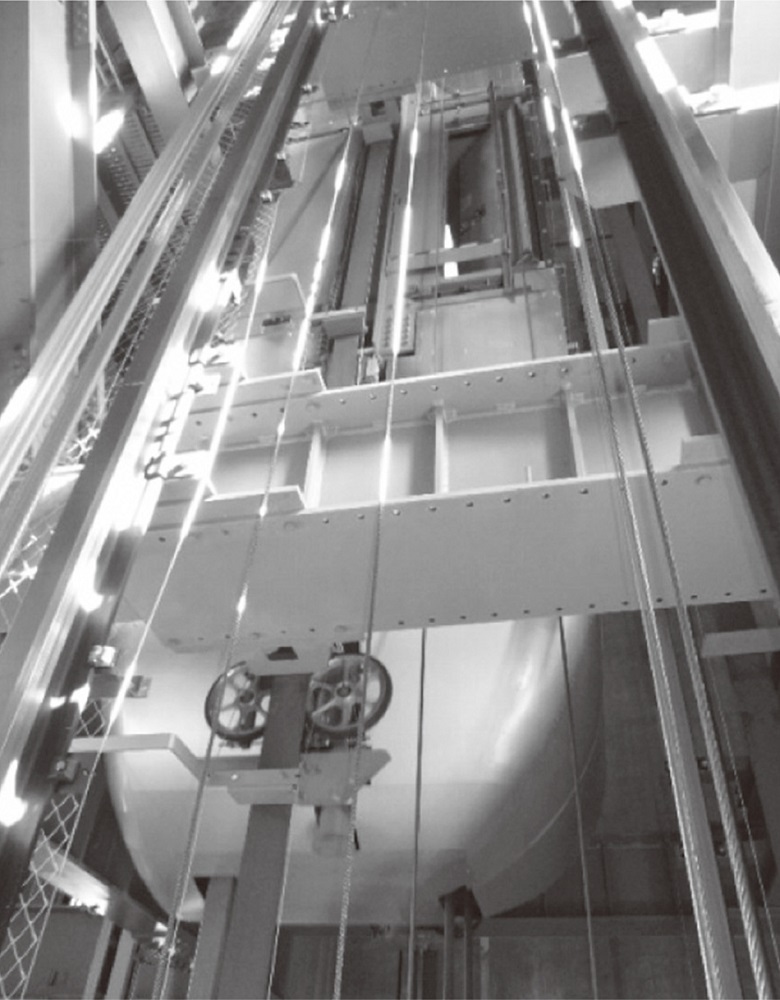
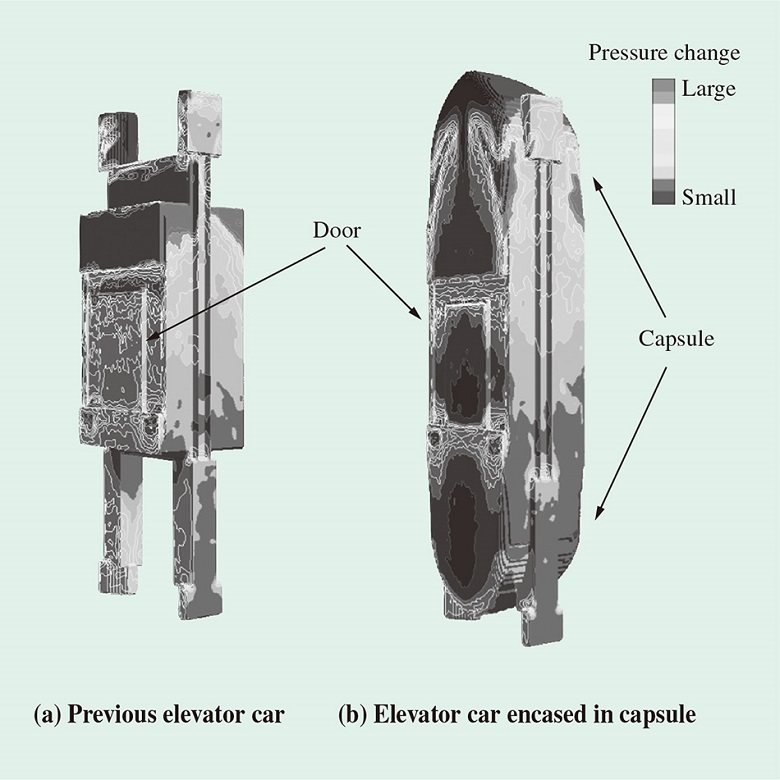
Capsule lift aerodynamic shape.
Photo sourceWhy the elevator goes up faster than down.
Experts have found that the problem of ear pledged is expressed mainly during the descent. Therefore, in a number of complexes, high-speed elevators deliver upstairs faster than downstairs. Remember the express trains of the Guangzhou Financial Center, mentioned in a couple of paragraphs above? Speed up - 72 km / h, and down - two times slower, so that people feel better.
In addition, for the fastest elevators, sensors for controlling internal pressure and differential compensating mechanisms have been developed.
Multiply by two
It is possible to increase the efficiency of elevators not only with the help of speed. The most obvious solution is to expand the size of the booths. And manufacturers actively use it. For example, the elevators of the 41-storey Umeda Hankyu office building in Osaka Japan have a lifting capacity of 5.25 tons each, and the cabin dimensions are 3.4 meters wide, 2.8 meters long and 2.6 meters high.
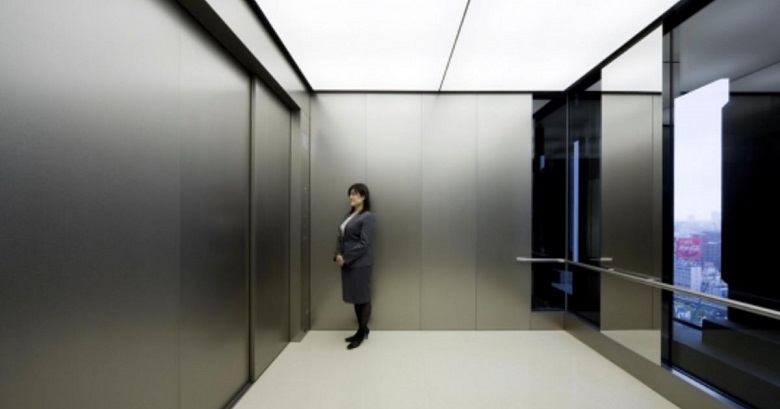 The lift area at Umeda Hankyu is almost 10 square meters. m
The lift area at Umeda Hankyu is almost 10 square meters. mLess obvious and technically more complex solutions are double-decker, that is, double-deck elevators and twin machines, partner elevators using the same mine. These cabins allow you to transfer twice as many passengers at a time. Real salvation for densely populated buildings.
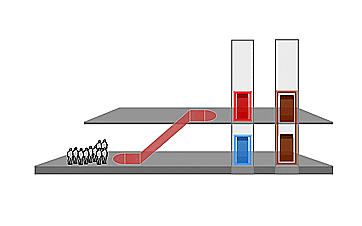 Multi-cabin elevators: left - twin, right - double-decker
Multi-cabin elevators: left - twin, right - double-deckerLeva sapiens
Olympic "faster, higher, stronger", yet not the main motto of modern elevator. The industry is following the path of the fourth technological revolution - elevators do not just improve themselves physically, they gain “intellect”.
And this is not a whim of manufacturers. Modern residential and office complexes are becoming more populated, however, mainly due to the growth of height, and not the area of buildings, so there is no extra space to accommodate additional elevators. Hence, we need complex multi-level vertical transport systems with intelligent control systems.
And here it is time to move to "Lakhta Center", where there will be more than 100 elevators, 40 of which are in the tower.
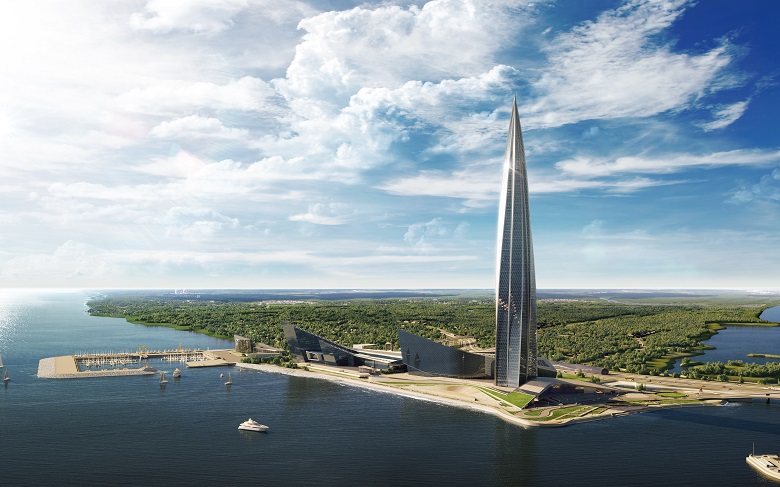
***
In the second part of the review, read about elevators in the tower - why was the skyscraper divided into traffic zones and what is skylobby? Elevator - consumer or electricity supplier? What will surprise the most interesting elevator in Lahta? Elevator rescue, elevator for IT and other special-purpose elevators.
***
Friends, there are many IT specialists among you, and we are now in the process of preparing the material about system administration at the construction site of the complex. If you have any questions on the topic - please add in the comments. If possible, we highlight interesting moments in the post. Thank you for your interest.